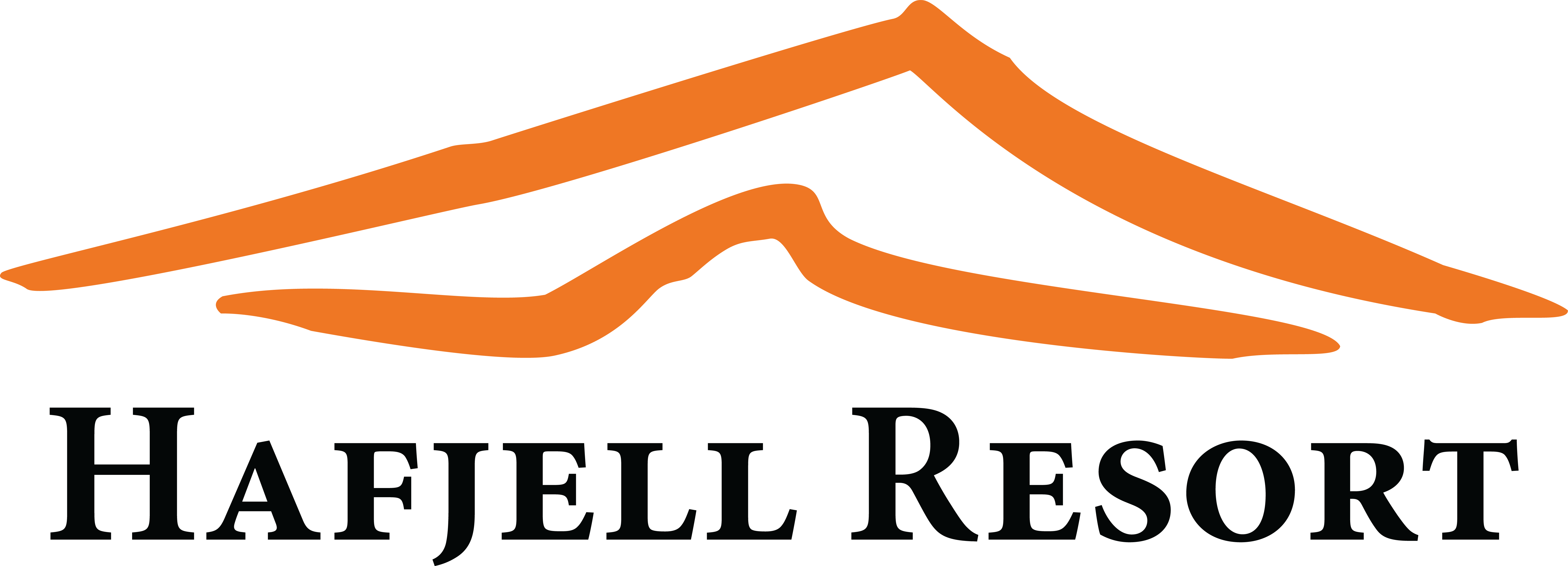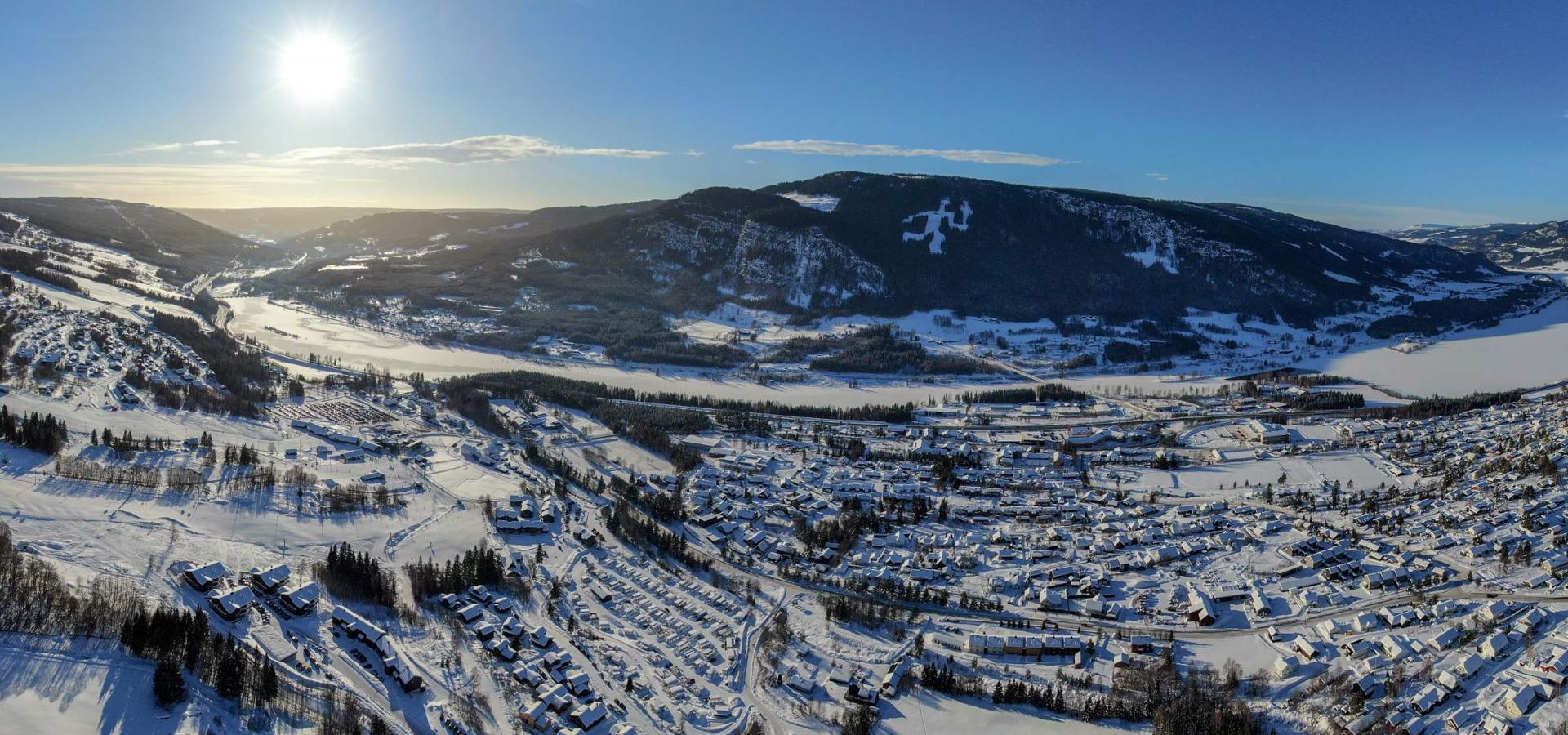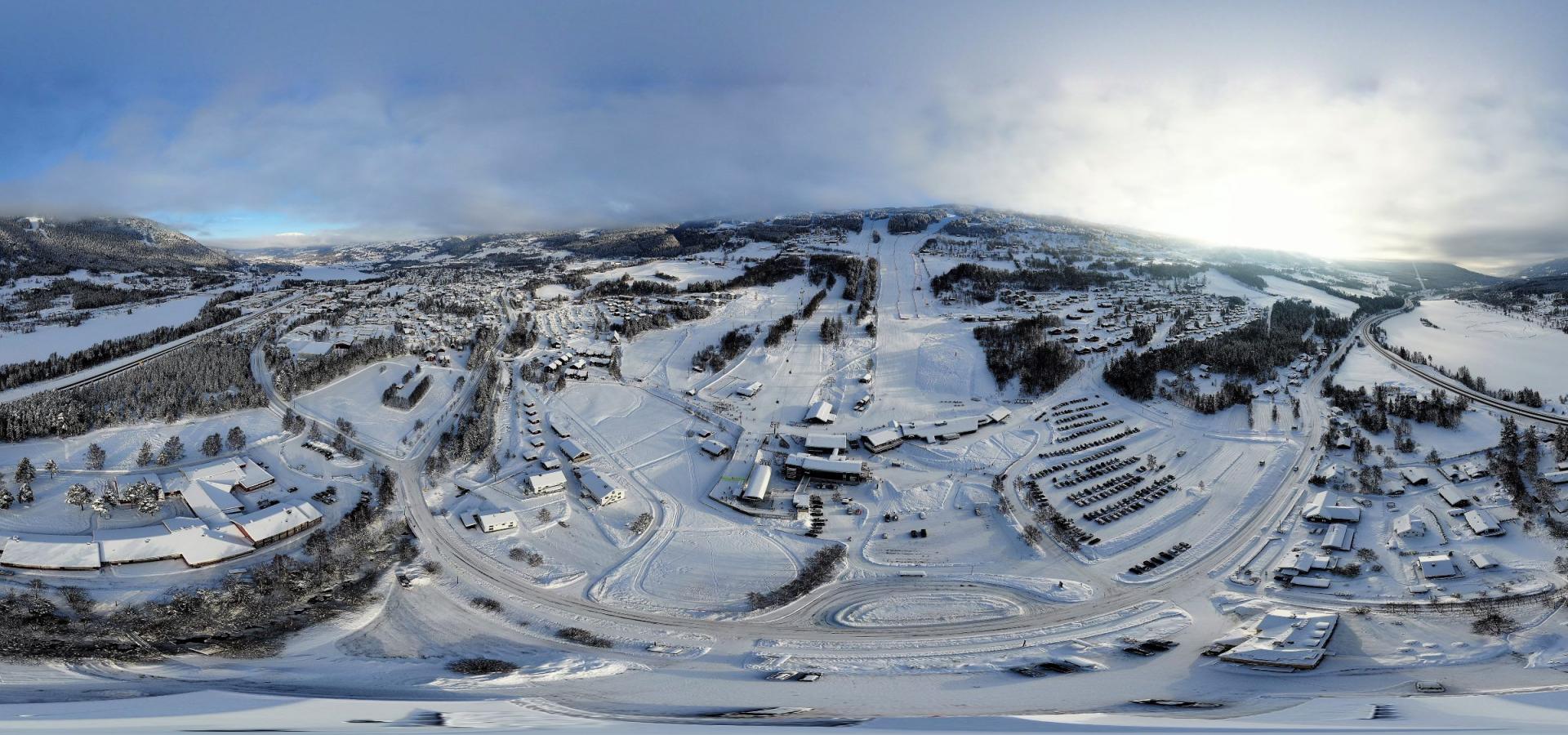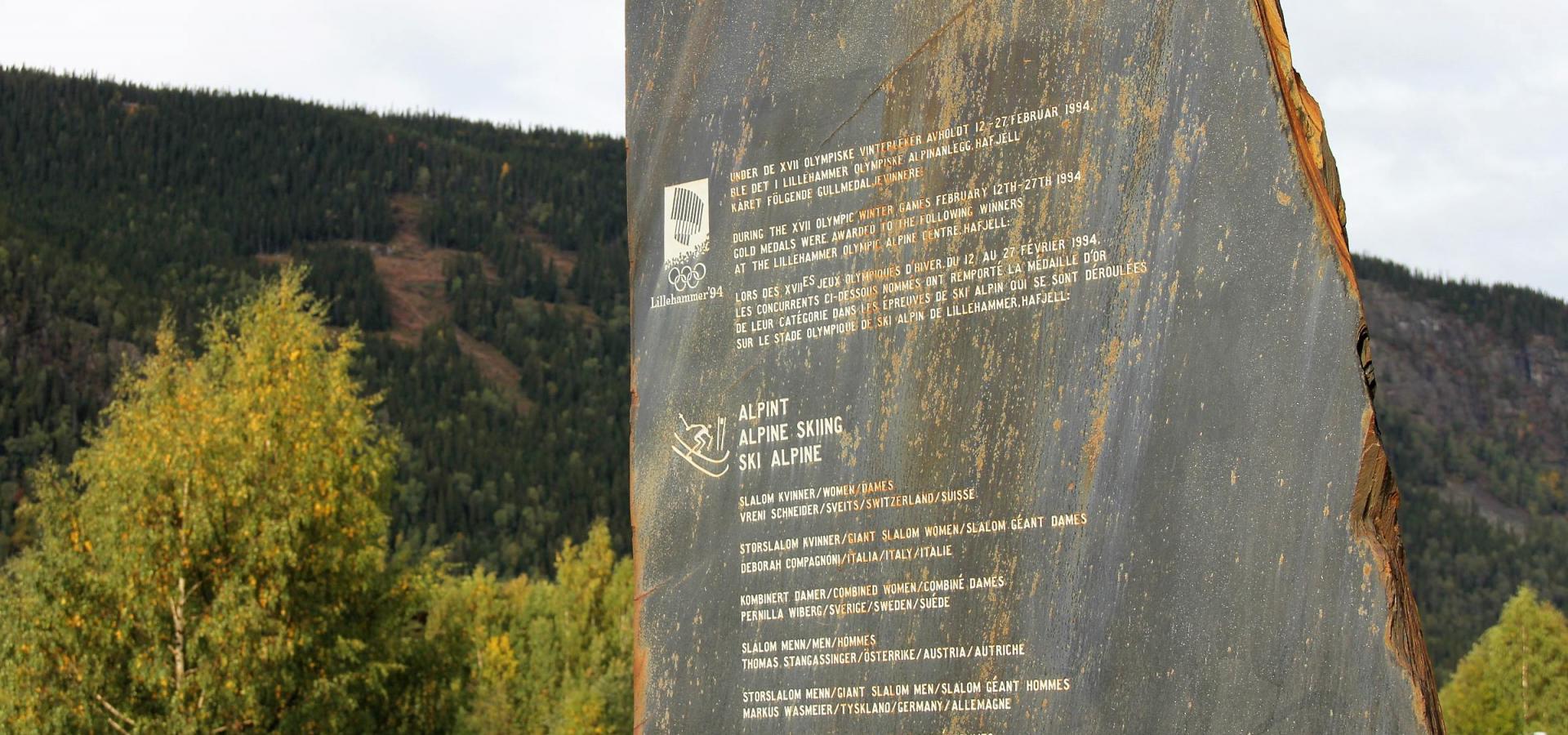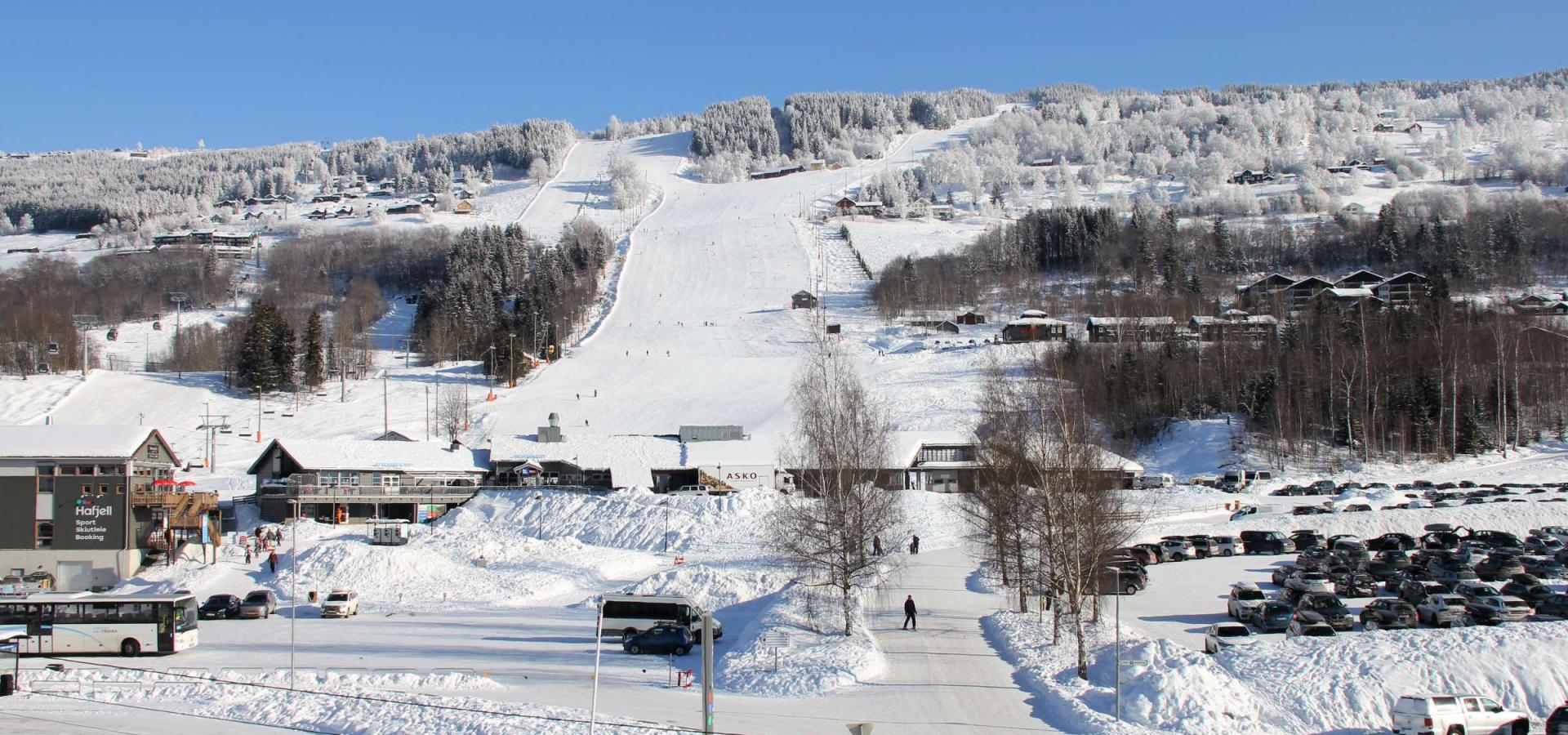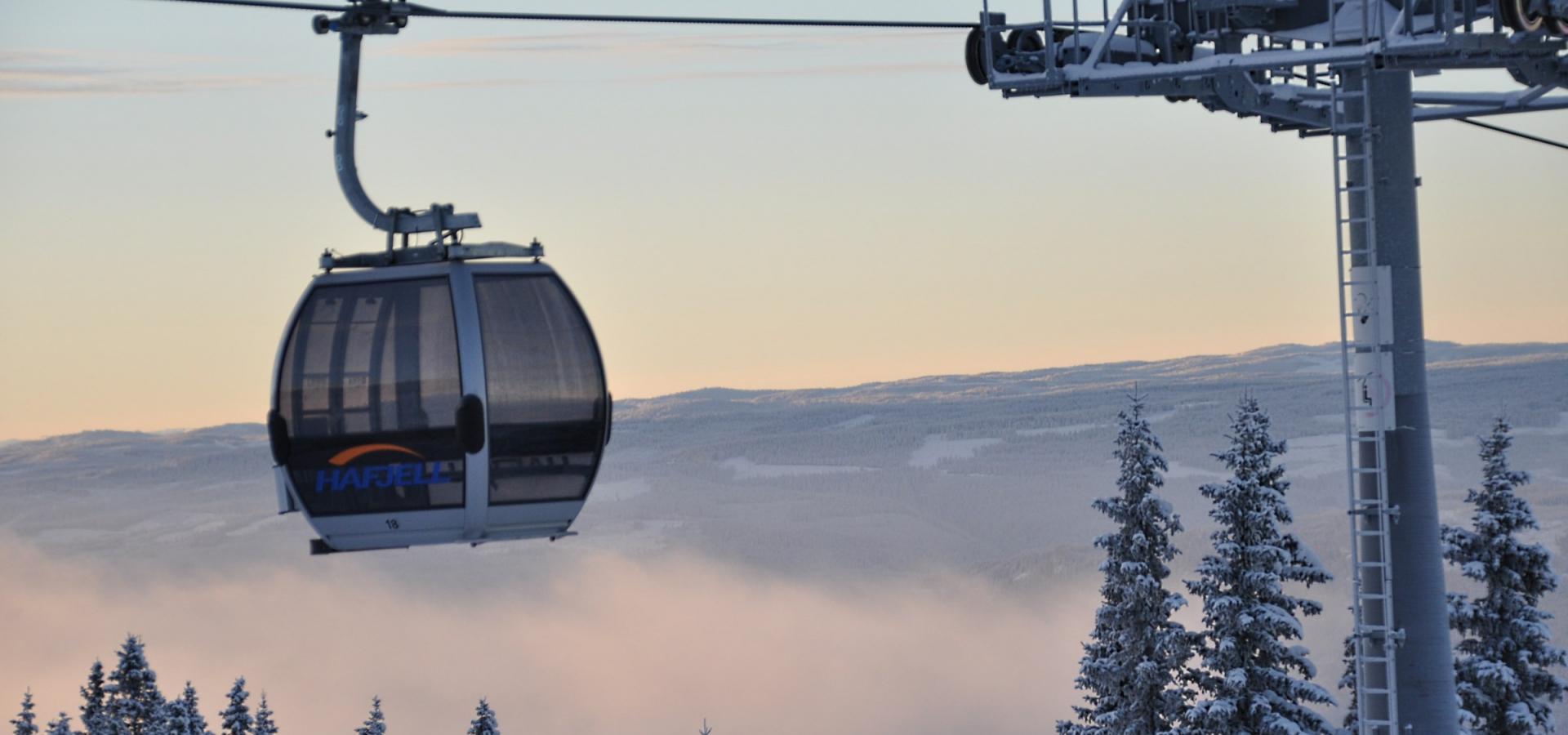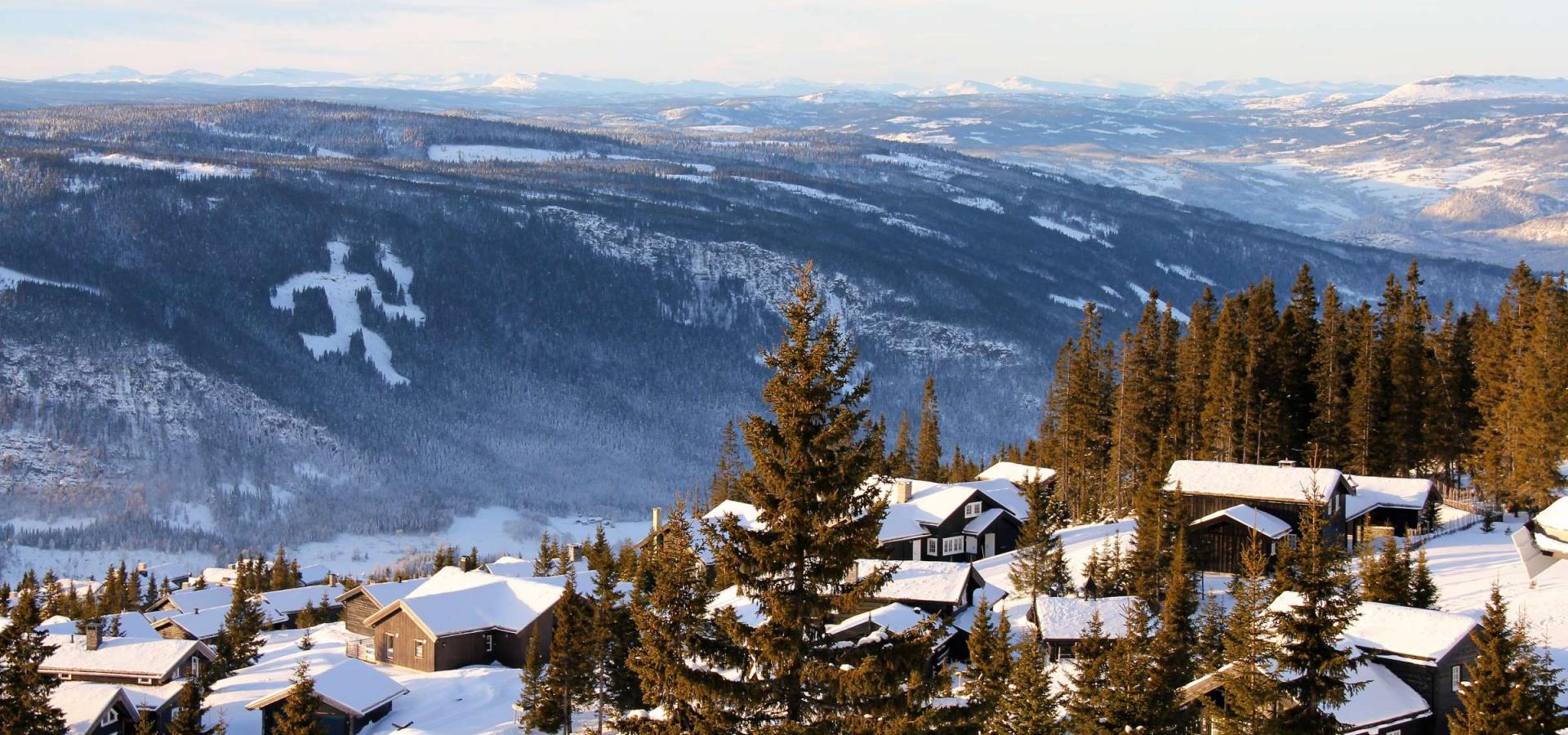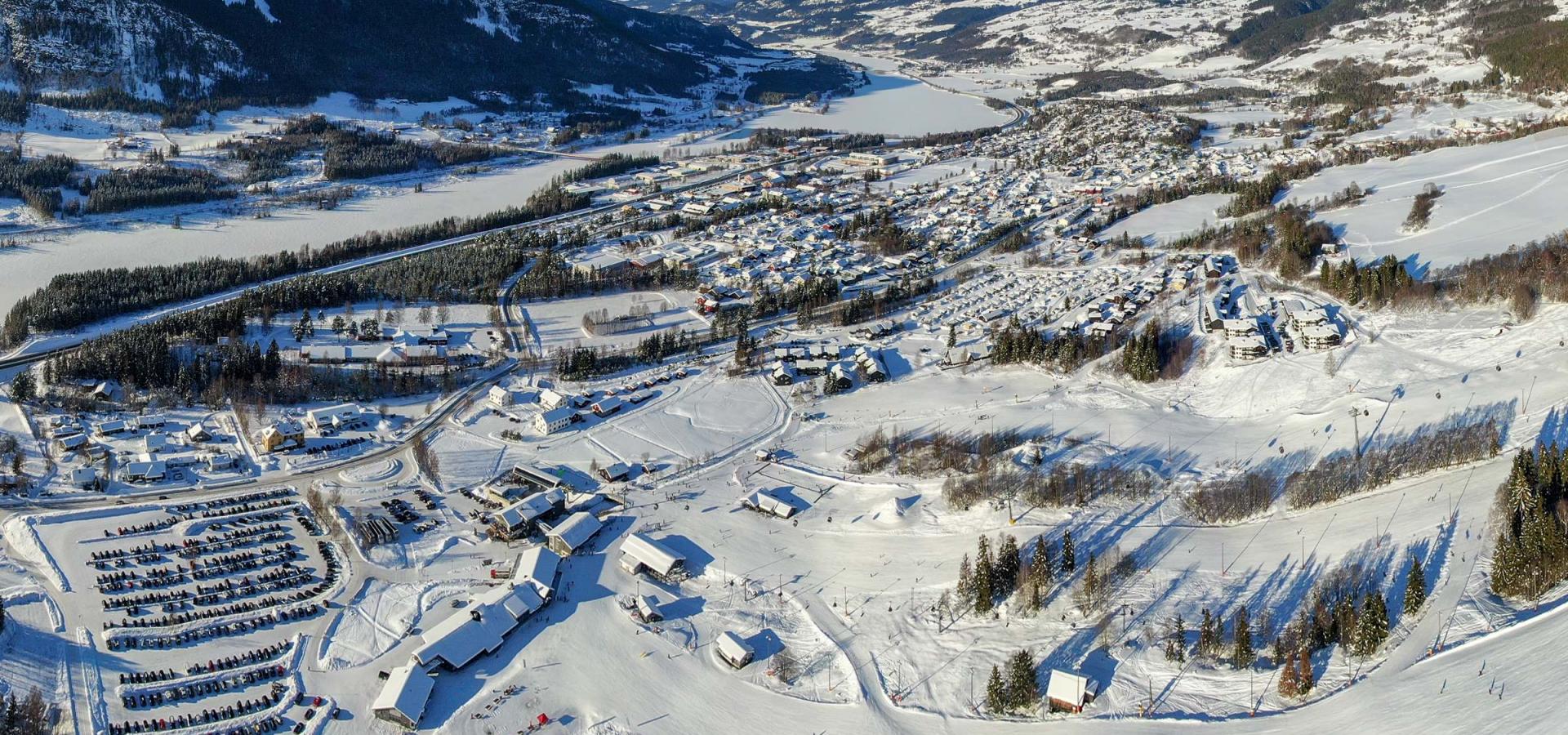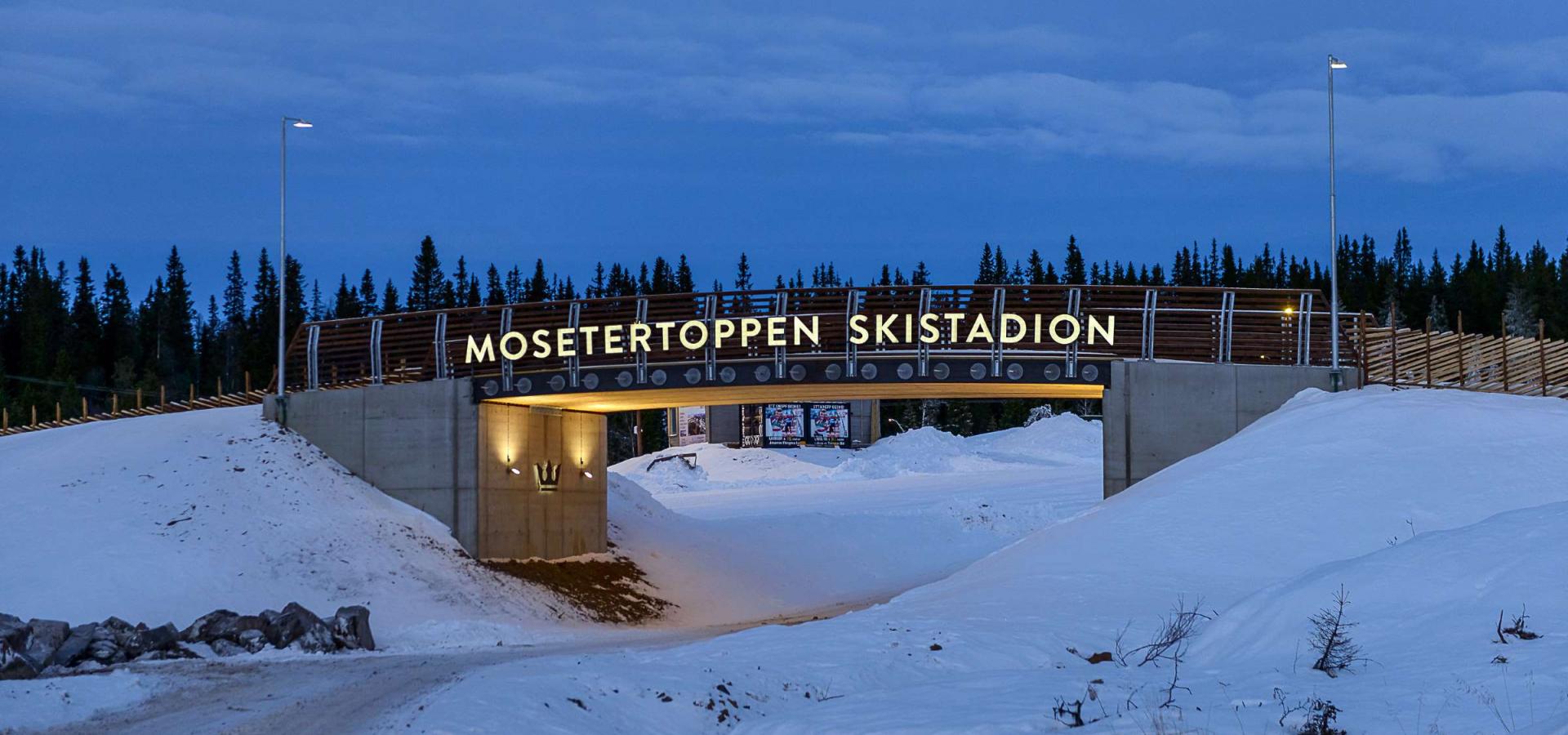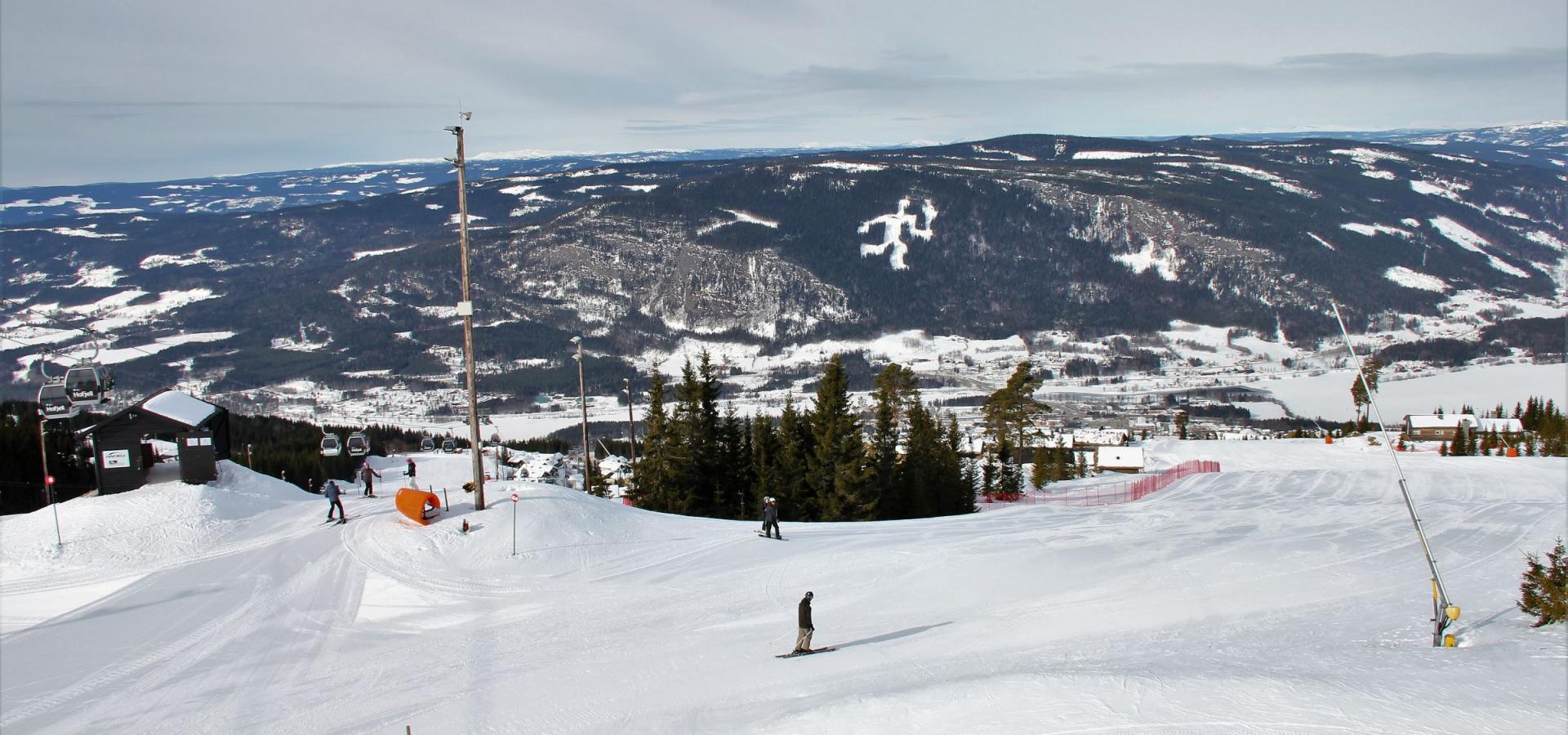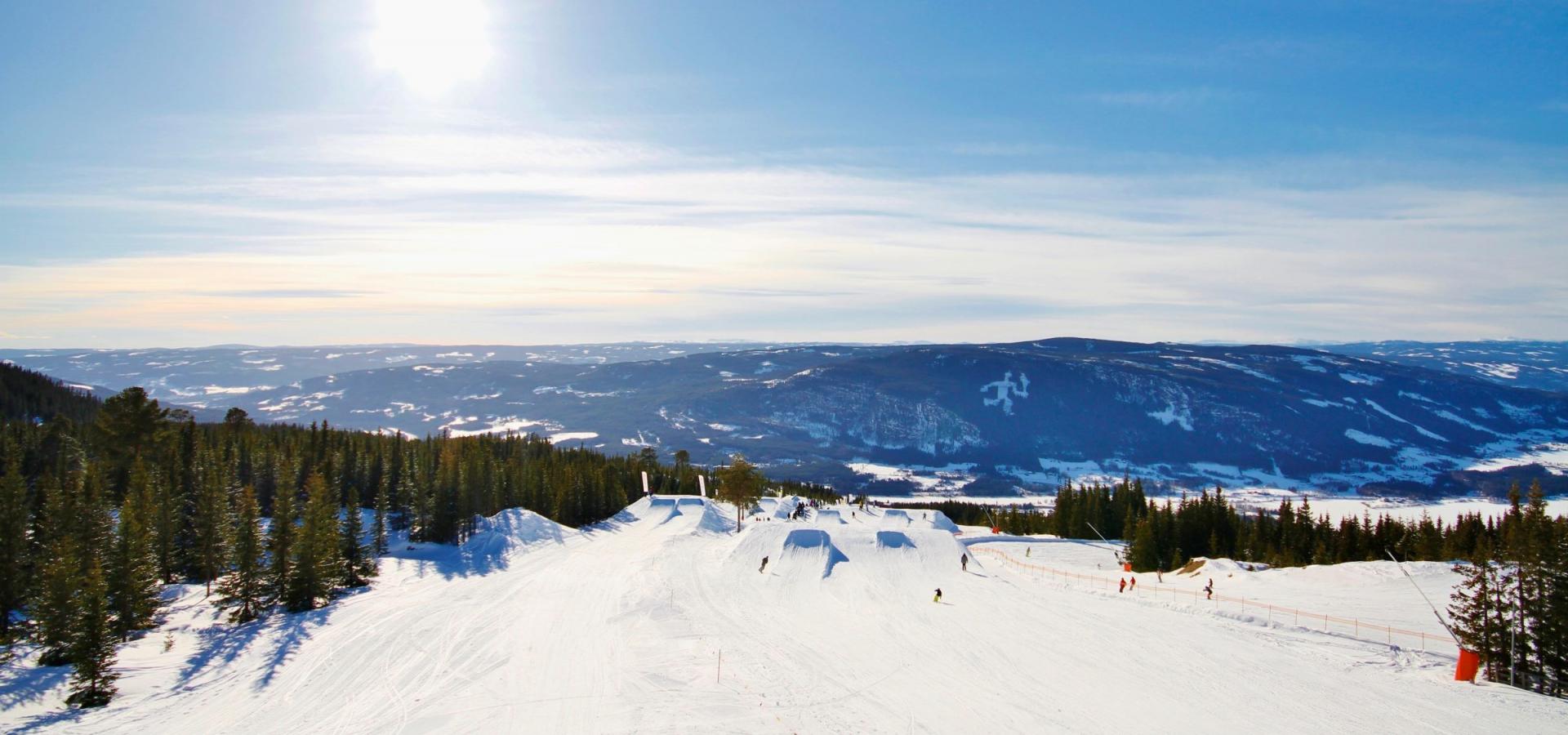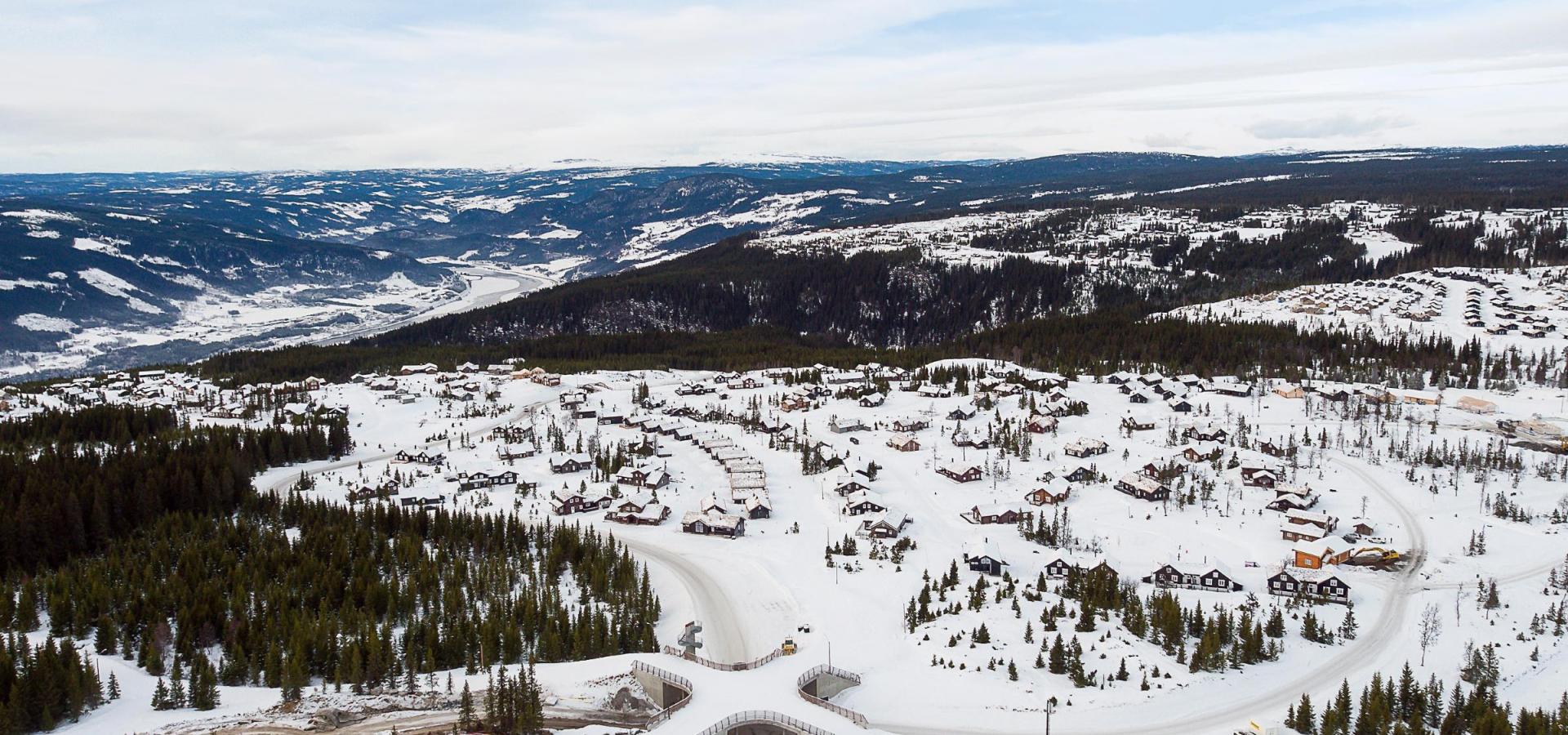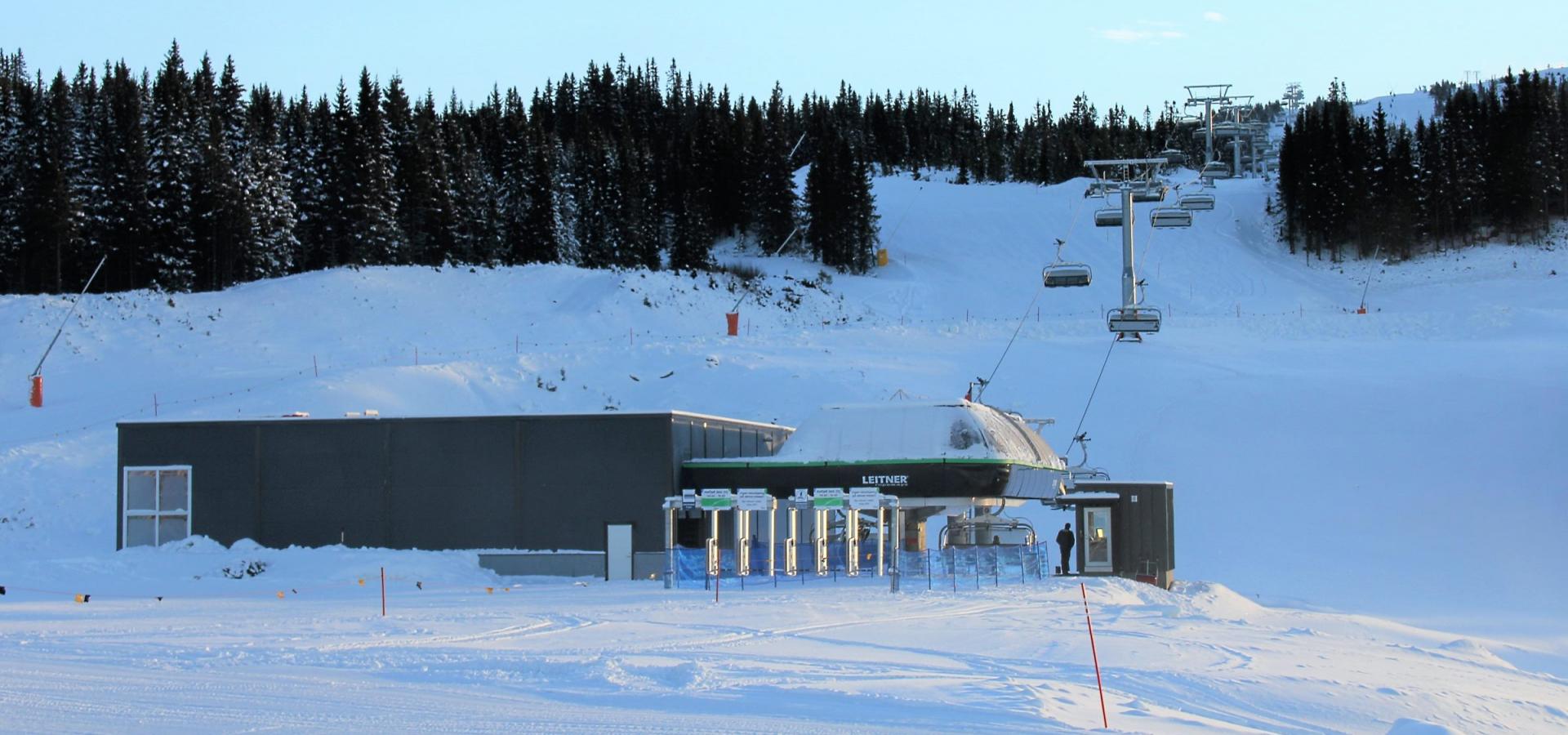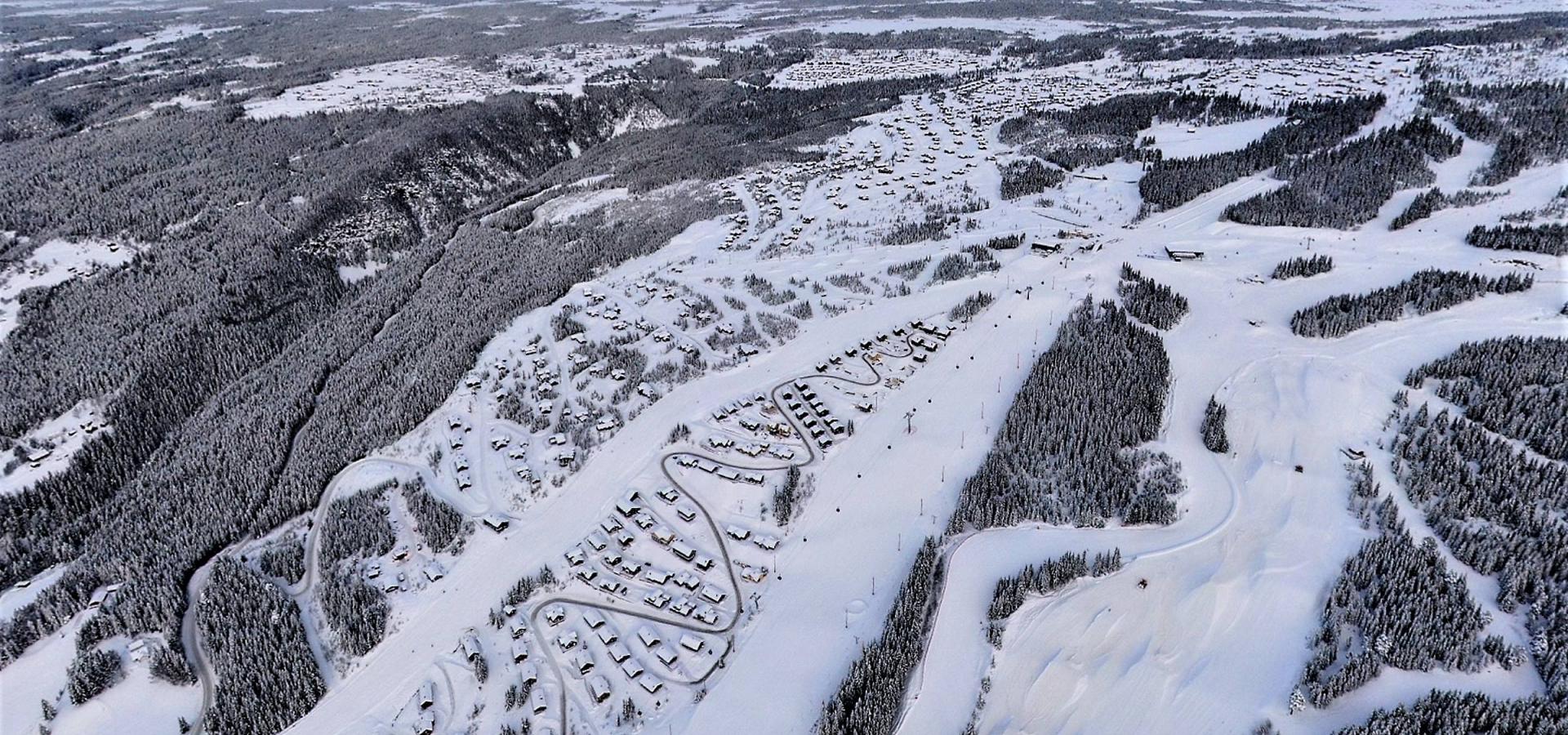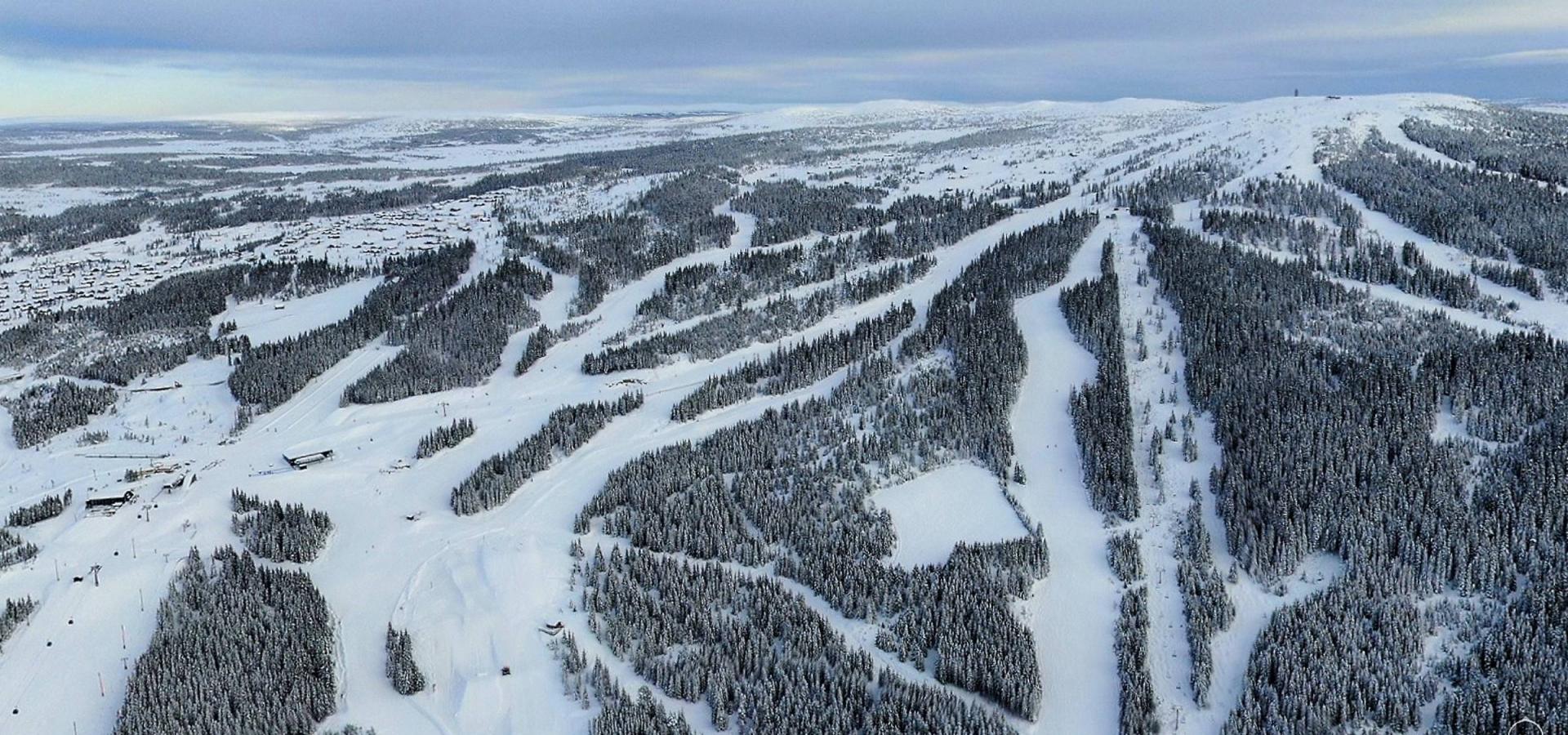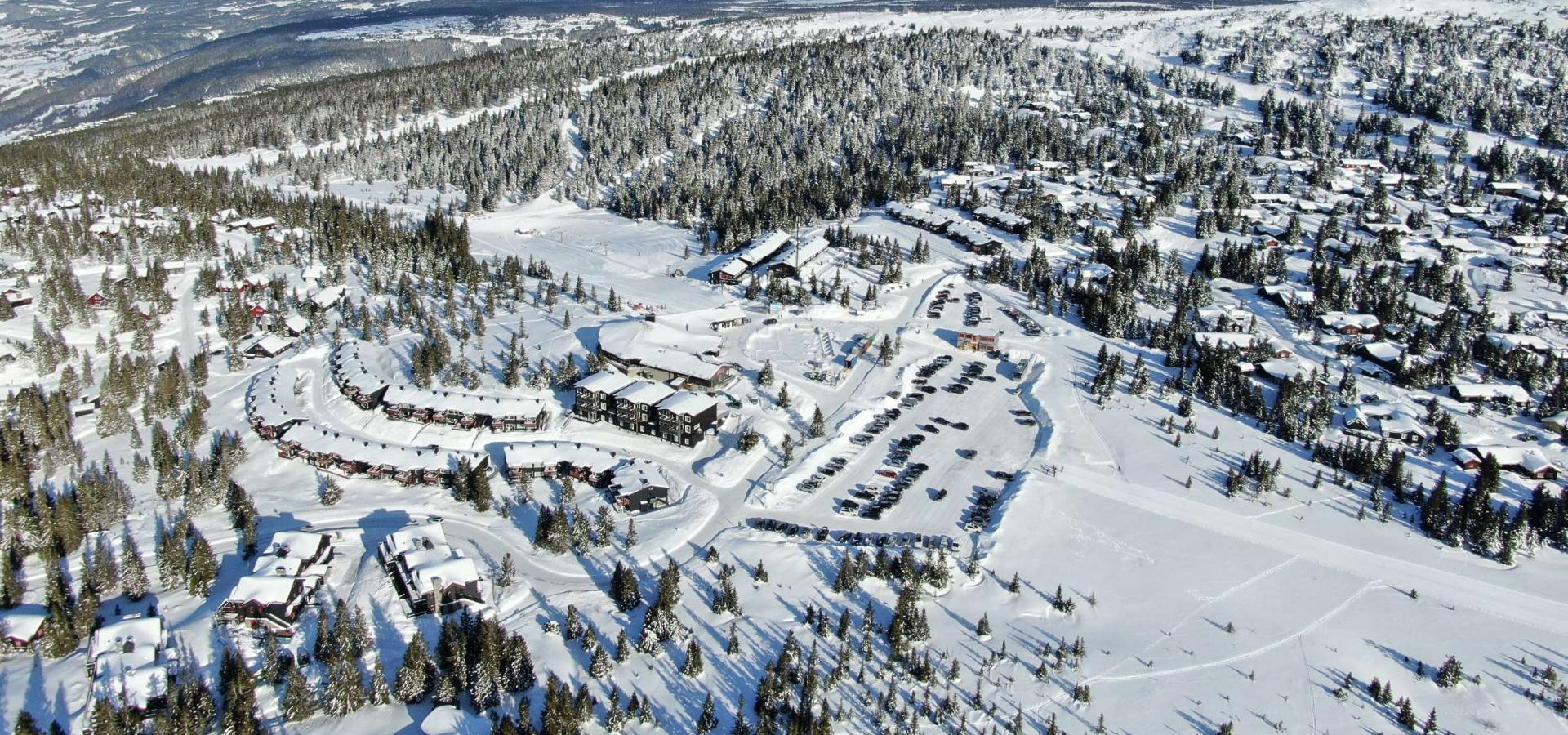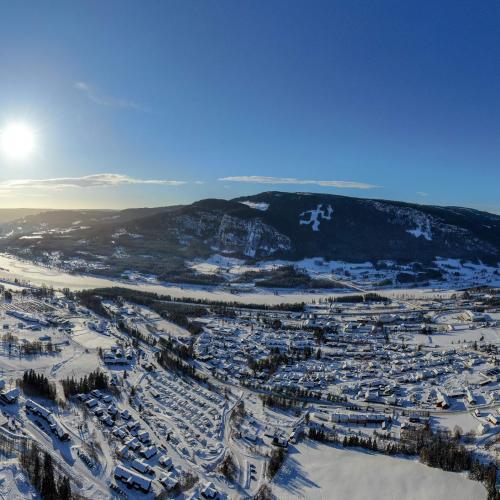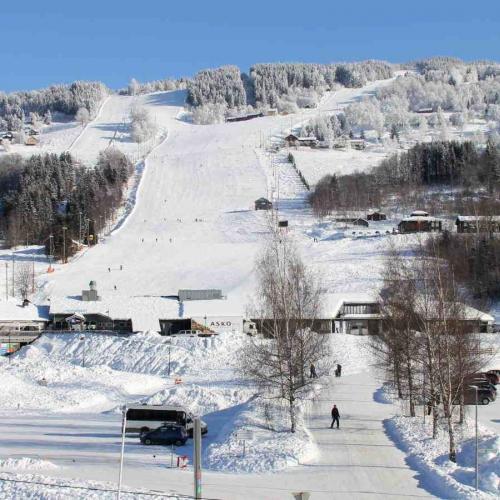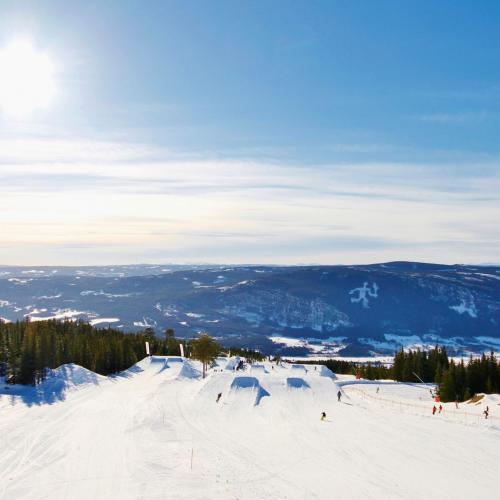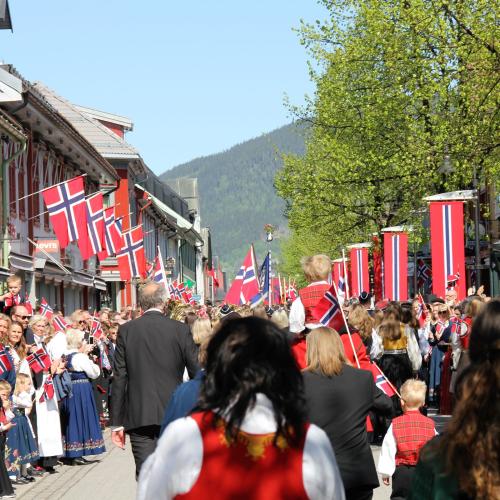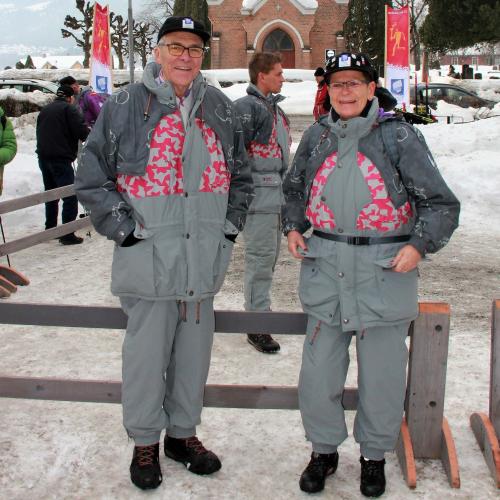The history of Hafjell
The history of Hafjell starts with a ski competition. Not a World Cup competition or a Norwegian Championship but the 1939 Student Championship.
Universite Winter Games
In February 1939 Lillehammer hosted the University Winter Games with Hafjell as the alpine venue. At the time Crown Prince Olav officially opened the winter games at Sportsplassen, Lillehammer. He was also a spectator to the Hafjell downhill competition, closely following the race from a royal stand of honour at the farm Kaldor.
The games were initiated by The Norwegian Ski Federation that in turn contacted the leader of Lillehammer Ski Club, Lars Høgvold, Andreas Bjørge, Johannes Råbøl and Johannes Nermo were in charge of preparing the run and make a deal with the landowners. The very first Hafjell run was completed to the reasonable sum of 300 Norwegian Kroner, covering the lumbering expenses. Before the international athletes entered the hills of Hafjell, the run needed to be tested, an event taking place on the 4th of February, 1939.
The Norwegian top downhill skiers were all present. The line of the run was pretty much identical to what it is today with the start at the top of the mountain and the length of 3,5 km, and the vertical drop of 850 m taking the skier down to the finish at Åsletten. This was no easy run!
The top speed was measured to 70 km/h, and the crossing of the local road gave the racers a real challenge. The estimated race time was app. 3 minutes, but another minute was added to the finish time. 21 skiers stood ready at the bright and chilly February morning of 1939. The great favourite was Sverre Lassen Urdahl who barely honored the expectations. The Lillehammer racer Johan Nicolysen was close to Urdahls heels all the way down the hillside.
Nicolaysen was in the lead to the crossing of the local road (where the tunnel jump is today), there he got too much air under the skis and fell. This cost him about 20 seconds, but still he came in second in the competition. The run was highly praised, and the race turned out to be a brilliant “trial run” before the Student Championship 2 weeks later.
After having declared the University Games opened on the 19th of February, Crown Prince Olav headed north to Hafjell and the downhill competition. 3000 enthusiastic spectators surrounded the race course as the Crown Prince climbed the stand of honor to watch the competitors rip the hills.
Marc Hodler
240 skiers from 17 nations participated, and one of them were to hold a central position in the future development of Hafjell. This was the Swiss skier Marc Hodler who didn`t quite make it to the rostrum, but ended up fourth in the combination, came in fifth in slalom and ninth in the downhill race.Hodler later became President of the International Ski Federation FIS and Vice President of the IOC.
When Lillehammer signed up as one of the candidates to organize the 1992 Winter Games, they soon realized that Mr. Hodler had good memories from the hillsides of Hafjell, knowing these would be up to standard. The Lillehammer Committee also knew how to take advantage of this in the marketing.
Another downhill competition was supposed to be held during the winter of 1940.Being a winter without snow, the race was canceled and nine years were to pass before another competition was organized in Hafjell. 1949 was the year when Hafjell held the Norwegian Championship. A heavy snowfall the night before Saturday 13 March, created big problems. Hard working volunteers and military personnel, however, managed to prepare a course in proper condition to send the skiers downhill. Jonny Lunde won the men`s competition, whereas Borghild Niskin was the female winner.
There were also plans on organizing the Danish Championship, but the Danish Ski- and Orienteering Federation withdrew the idea as the course was considered too long and too steep for our Danish friends. But that is more than 50 years ago (Now the Danish Ski Federation annually hosts their Danish Championship in Hafjell).
The championship in 1949 turned out to be the last one for several years. In 1957 the run was proposed closed down. Gudbrandsdal Ski District no longer took any interest in the course, and in 1958 the deal with the landowners was terminated. Though the hill seemed to “rest in peace” to the 1988 reopening, conducted by the secretary of culture; Hallvard Bakke, there were no lack of plans. The first one to make a try was a Gjøvik engineer Stein Erik Skaug. On the 18th of July 1961, the Øyer executive committee received his application where he asked for support to what was called the Hafjell Project. And Skaug had big plans; a unique tourist- and sports center with a cost estimate of 7 million Norwegian Kroner. out that Skaug had not enough financial force to pursuit his ambitions.
10 years passed before a committee was established in 1971. This time the purpose was to make the Norwegian Ski Federation appoint Hafjell as the national venue for alpine disciplines. The committee started its work 12th of February 1972 with Lars Gaukstad as the chairman. Though the committee was hardworking and produced applicable reports and ideas, they never managed to realize the project.
Four years later there was still not a basis solid enough to start the construction. New plans were constantly considered, and new advisers were hired. In 1983 French Jean Cattelin visited the area. He was one of the world leading experts on masterplanning and resort management. Øyer County Council and the board of directors representing Gudbrandsdalen Sparebank had a meeting on how to fund the plans, and the bank promised to look more closely at the proposal.
The Olympic dream
Simultaneously, the Olympic dream was about to become firmly planted in Lillehammer, with the bank as a central player. 20th of January 1982 The Lillehammer executive committee summoned an extraordinary meeting. The committee concluded the meeting with a firm “go” for the Olympic plans. Ole Sjetne was appointed leader of the project group. Hafjell`s position in the Olympic dream was obvious – the venue of the alpine disciplines. In the first phase, the Olympic project somewhat took the focus away from the Hafjell plans, but since the report on how to construct the resort was completed it became most valuable for the project group, though preparations for the construction work remained to be outlined.
Lillehammer fought the battle to win the 1992 Winter Games, but Albertville emerged victorious from the race. Norway and Lillehammer, however, had whet the appetite and decided to strive for the 1994 Winter Games. The resistance towards a new attempt was mininal, but there was a big catch with the next try!
Lillehammer 1994
Lillehammer had to convince the IOC that they were serious about the plans. Venues had to be built and the choices were easy: Hafjell, and the ice hockey stadium, Kristins Hall. Hafjell was a good alternative because alpine is considered a vital, international discipline and Norway, renowned for hosting nordic events, had no status as organizers of alpine disciplines.It turned out quite fast that Marc Hodler and his good memories from the Student Championship in 1939 affected crucial decision makers.
When the 1994 Winter Games were accorded in Seoul, the construction of Hafjell was concluded to a price of 130 million Norwegian Kroner. Lillehammer had proven that they were serious about their Olympic prospects and the old dream was realized. Hafjell could start to progress towards becoming one of the top alpine destinations of Norway.
